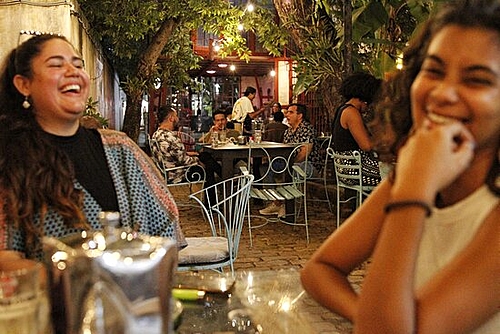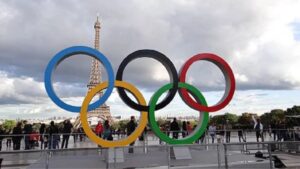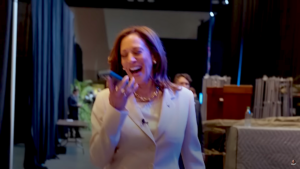
At sunset in Havana, the traditional Malecón – as the long wall that stretches along the north coast and crosses the city is called – becomes the meeting point for families, friends and couples to watch the last minutes of sunset drowning in the sea. Guitars, songs and dances accompany the passage. And, as long as the light allows, photographers, professionals or amateurs with their cell phones, try to capture the colors of the sunset.
The diverse artistic expressions are part of everyday life in Havana. From the recitals in the neighborhoods to the squares where groups of young people gather to dance. Since the triumph of the Revolution in 1959, access to culture has always been at the center of public policy concerns. And, in recent years, following changes on the island, Cuban cultural initiatives have multiplied.
“Havana is very photogenic. It has many shades of color and texture. The old and even destroyed buildings, together with the old cars, form very photographic landscapes”, reflects Osmel Azcuy as he climbs the stairs to the terrace of Malecón 663. of the walls decorated with photographs of Osmel himself are testament to the photogenic quality he is talking about.
Upon reaching the terrace, Osmel takes advantage of an oversight by the DJ and takes control of the music for a while. Osmel has worked at Malecón 663, a boutique hotel located halfway between Old Havana and downtown Havana, for nearly four years. The venue promotes exhibitions, recitals and designer fairs. The Malecón building, which faces the promenade that gives it its name, has three floors and each of its rooms is decorated in a way to honor the different eras of Havana during the 20th century.
“I arrived at the Malecón by chance. I had finished a photographic exhibition in New York and, when they sent me the photos here, I was desperate to find a place to present them. One day I was walking and the place caught my attention. So I decided to join and that’s how I met Sandra, the owner. I told her about my intention to set up the exhibition and that’s how we made the exhibition here and after that other projects started to happen until today”.
Osmel Azcuy’s acting training is evident in his works. The dramatism of his portraits favors conceptual emotionality to the detriment of linear narrative. Far from the stereotypes of any kind of social realism, as if it were a generational sense, Osmel bets on an art without prejudice and outside mandates. An art that seeks new spaces to show itself.
Work by Osmel Azcuy / Reproduction Instagram
“There are many very interesting artistic projects being born. In painting, photography, dance and music. Cuba is full of places to go out. And not just, as people think, to go out to a party. But also places where you can educate yourself, where you can learn. And, in that sense, I think it’s important that there are projects like the Malecón, which give people the opportunity to see something different, something new. They are committed to opening your mind and getting out of the everyday. I think it’s good that there are more and more places like this,” says Azcuy.
The privileged location of the terrace of Malecón 663 allows you to see the main buildings of Havana: the Capitol, the Lighthouse, the Hotel Presidential. Cardinal points of a city built facing the sea. At the same time, it is one of the spaces that has collaborated most with international art exhibitions, many of them linked to the Havana Biennials.
Night on the Malecon
“When we set up this project, we did it thinking about the place we would like to visit if we went to Havana. A place where different artistic expressions would have a place. But, above all, where Cubanness would come first”, says Sandra Exposito, a from the creators of Malecón 663, to Brazil in Fact.
All objects inside the building were designed by Cuban artists. And everything for sale, from food to designer clothes, is made with materials from the island. Sandra Exposito observes that, in addition to the scarcity that may exist as a result of the blockade, they have always proposed to do everything with what they have.
Inside the building, the vast majority of furniture has been made from recycled materials. Furthermore, in keeping with a sustainable philosophy, disposable materials such as plastics have been banned.

“Sometimes there is an idea that what comes from outside is better. And we set out to work in the opposite direction. Privileging what is produced here with what we have here. And it grew little by little, for us it is It is a great joy for young people to come with proposals to show what they do with us. This is how a very nice community was created, of young people who are experimenting and doing new things with great value and creativity”, says Sandra.
The creation of the space was almost a coincidence. Sandra was born in France and traveled to Cuba in the late 1990s to learn salsa dancing. Back in her homeland, she fell in love with a Cuban musician who was touring Europe. They decided to move to Cuba and build a life there.
After a few years, she and her husband bought an apartment in the building with the idea of living across from the Malecón. At that time, the building was abandoned, so they had to start renovating it to make it suitable for living. However, when work began, they found that the architecture of the building itself was badly damaged. This forced them to renovate the entire building and they gradually bought the rest of the apartments.
When they found such a large space just for them, they decided to open the doors to transform it into a cultural space. The first thing they did was to invite young architects, many of whom had not yet finished their studies, giving them freedom to experiment with space. Like many of these spaces in Havana, Malecón 663 has followed the different legislative changes that have taken place in Cuba. They started as a group of Autonomous Workers (TCP) until registering as a small company (Mipyme) today. A place from which they have followed the cultural changes that have been taking place on the island in recent times, giving space to new Cuban artistic expressions.
A small art farm in Havana
“To try to understand the Caribbean, you have to understand the diversity that makes up this region. From the outside, we often see an image made for export consumption that fails to capture the richness or real multiplicity of the Caribbean. We are talking about a region. which is perhaps one of the most plural in its composition, whose history includes the native peoples, the Spanish, French, Dutch and English conquests, as well as the enslaved African population”, says Adrián Villazon, cultural manager of Coco Blue and Zorra Pelua, for the Brazil in Fact.
Adrián speaks with enthusiasm as we visit the Coco Blue gallery and la Zorra Pelua, a cultural center located in the heart of the Vedado neighborhood, where various artistic and pedagogical activities are carried out aimed at promoting contemporary Cuban art.
“Caribbean art teacher and researcher Yolanda Wood Pujols always refers to the Caribbean as a ‘multi’ space: multifaceted, multilingual, multicultural, multiethnic, multireligious. In other words, a heterogeneous, diverse and plural region. part of the Hispanic Caribbean, we find ourselves in that middle ground. On the one hand, we are part of the Caribbean, but we are also part of Latin America. And this generates an immense richness in our cultural expressions, which are, by definition, diverse”, he adds .
Coco Blue e la Zorra Pelua, a space created by the visual artist José Emilio Fuentes Fonseca, better known as Jeff, proposes to shelter part of this cultural multiplicity.
With a long artistic career in mind, Jeff became a well-known figure in the city in 2009 when, for the Havana Biennial, he created a series of 12 life-size metal elephant sculptures, which he moved at night so that they would appear in different parts of the city at dawn. city. Today, the herd rests in the square of Centro Empresarial Miramar.
During the pandemic, on land that had become a garbage dump, Jeff built what is now Coco Blue e la Zorra Pelua. A space that, in itself, is a work of art The wooden planks and iron beams on which the architecture of the place was built were all made from discarded elevator boxes from Russia. Like the vast majority of objects that make up the space, they are also recycled.
“When one thinks of or refers to Cuba in terms of music, salsa, ballads and trova always come to mind. But above all, the new generations have begun to implement new styles or merge them. The Cuban scene contemporary music is experimenting a lot with fusion. It’s even rescuing genres or rhythms that gave rise to what we know today as Cuban music, fusing them with rhythms and genres from Latin America, the United States or Europe. Our approach here, especially with these new changes that we are trying to promote all the time, it is to make room for all Cuban creation – be it traditional or young – which is always welcome”, says Adrián Villazon.
In addition to offering a visual space for new artists and artistic languages, the cultural space is creating a scholarship system to help young artists. Especially for those who are from the interior of the country and who often have difficulty getting to the island’s capital. Part of the profits obtained from the gastronomic services, shows and exhibitions offered by the place is destined to a fund that serves to support these scholarships.
“We know that there are artists who are extremely good and deserve opportunities. And although there is a great effort from the State so that they can study and carry out their work, we also want to be able to make our contribution. Especially in this difficult context we are going through. We believe that everyone should have opportunities and that’s why we also created this space”, says Adrián Villazon with pride.
Far from the tourist stamps, Havana’s cultural life is full of life and undergoing enormous changes. With new genres, new languages and, above all, new spaces to develop.
Editing: Thales Schmidt
Source: www.brasildefato.com.br

